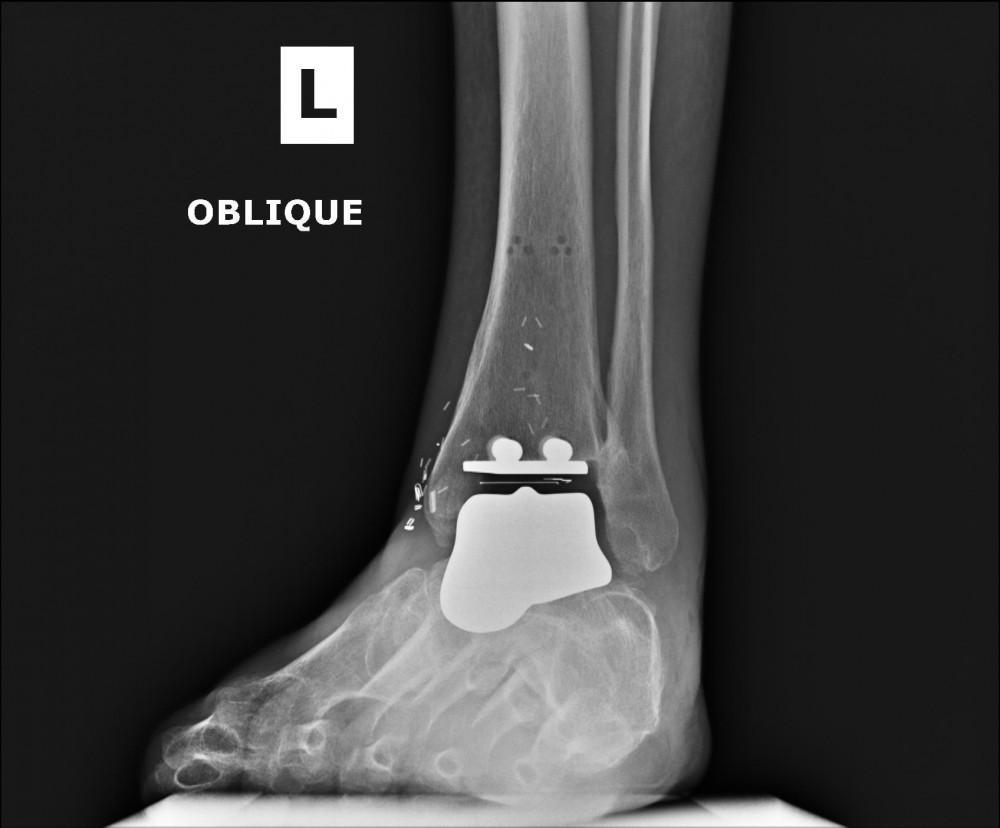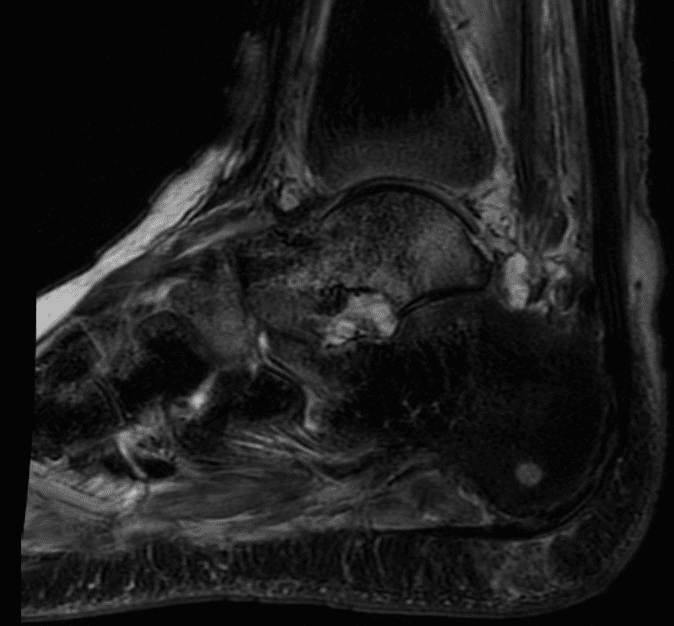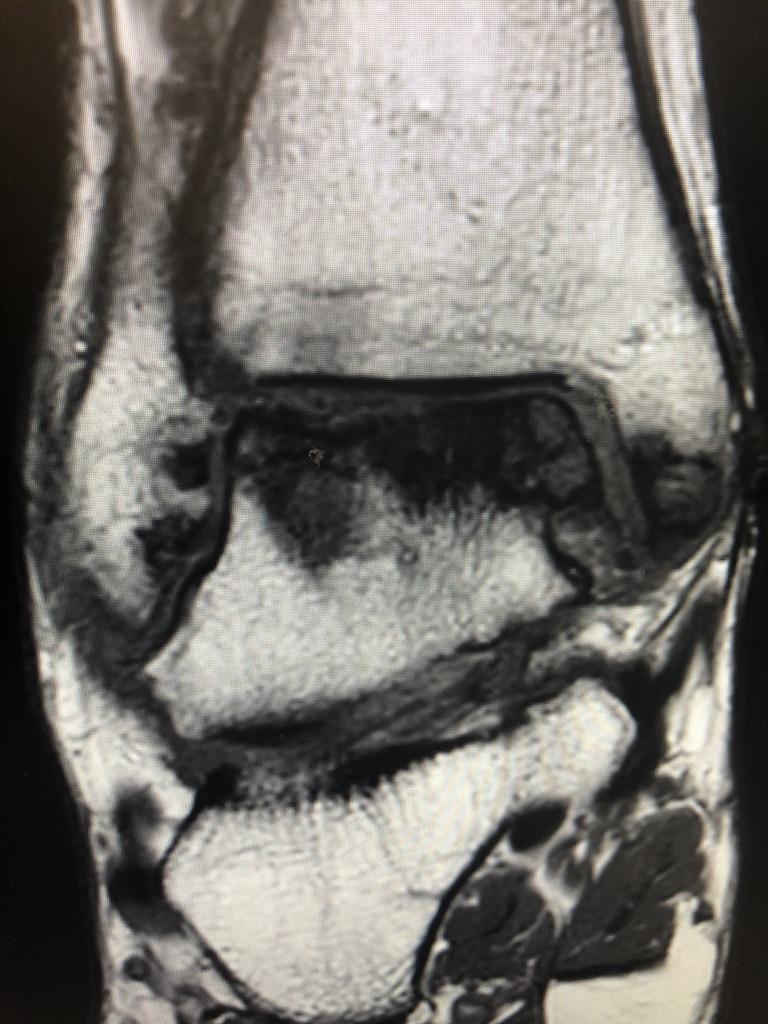What is Avascular Necrosis (AVN)?
What is Avascular Necrosis?
Avascular necrosis is a disease that results from the temporary or permanent loss of blood supply to the bone. When blood supply is cut off, the bone tissue dies and the bone collapses. If avascular necrosis happens near a joint, the joint surface may collapse as well.
This condition may happen in any bone, but in the ankle typically occurs in the talus. It may affect one bone, several bones at one time, or different bones at different times.
What causes AVN of the ankle?
Avascular necrosis may be the result of the following:
- Injury (ankle sprain or repeat ankle sprains)
- Fracture
- Damage to blood vessels of the talus
- Long-term use of medicines, such as corticosteroids, prednisone
- Excessive, long-term use of alcohol
- Specific chronic medical conditions

What does AVN feel like?
The following are the most common symptoms of avascular necrosis of the ankle/foot. However, each person may experience symptoms differently.
Symptoms may include:
- Minimal early joint pain
- Increased joint pain as bone and joint begin to collapse
- Limited range of motion due to pain
- Pain with weightbearing activities
Swelling around the ankle
The symptoms of avascular necrosis may look like other medical conditions or bone problems. Always talk with your foot and ankle specialist for a specific diagnosis.
The symptoms of avascular necrosis may look like other medical conditions or bone problems. Always talk with your foot and ankle specialist for a specific diagnosis.
How is AVN diagnosed?
Along with a complete medical history and lower extremity exam, you may have one or more of the following tests ordered:
- X-ray. Ankle Arthritis Centers utilize advanced digital radiographs to assess the structure of the foot and ankle bones in a weightbearing format. This is typically the first step to a diagnosis.
- Magnetic resonance imaging (MRI). This test uses large magnets, radiofrequencies, and a computer to make detailed images of organs and structures within the leg. This is usually the first test ordered to determine the extent of the arthritis and avascular necrosis.
- Computed tomography scan (also called a CT or CAT scan). This is an imaging test that uses X-rays and a computer to make detailed images of the ankle. CT scans are more detailed than general X-rays.
- Bone scans. This nuclear imaging technique uses a very small amount of radioactive material, which is injected into the blood to be detected by a scanner. This test shows blood flow to the bone and cell activity within the bone. This can also be utilized to help rule out infections when needed.
- Biopsy. A procedure in which tissue samples are removed (with a needle or during surgery) from the body for exam under a microscope.

MRI (T2) showing talar body avascular necrosis.

MRI image showing talar dome avascular necrosis.
How do the Ankle Arthritis Centers treat AVN?
The goal of treatment is to improve functionality and stop further damage to the bone or joint. This is a treatment to reduce pain and swelling as well.
Treatments are needed to keep joints from breaking down and may include but are not limited to:
- Ankle and Foot Bracing. These are used to reduce weight on the ankle bones.
- Talus Core Decompression. For this surgical procedure, the inner layer of bone is removed to reduce pressure, increase blood flow, and slow or stop bone and/or joint destruction. This is a salvage attempt to restore the blood supply to the talus
- Subtalar Joint Fusion. An attempt is often made to help bring blood supply to the affected bone (usually talus) by fusing the calcaneus to the talus.
- Regenerative Injections. The AACs often try all non-operative options first with the use of amniotic flowable injections when necessary or even platelet rich plasma. This can help stall or halt the progression of the disease process.
- Custom Implants and Replacement. This surgical procedure removes and replaces an arthritic or damaged joint with an artificial joint. This may be considered only after other treatment options have failed to relieve from pain and/or disability.
Other treatments may include electrical stimulation and combination therapies to promote bone growth.
Locations
Patients

Dr. James Cottom
Lorem ipsum dolor sit amet, consectetur adipiscing elit, sed do eiusmod tempor incididunt ut labore et dolore magna aliqua. Ut enim ad minim veniam, quis nostrud exercitation ullamco laboris nisi ut aliquip ex ea commodo consequat. Duis aute irure dolor in reprehenderit in voluptate velit esse cillum dolore eu fugiat nulla pariatur. Excepteur sint occaecat cupidatat non proident, sunt in culpa qui officia deserunt mollit anim id est laborum.

Dr. Jeff McAlister
Lorem ipsum dolor sit amet, consectetur adipiscing elit, sed do eiusmod tempor incididunt ut labore et dolore magna aliqua. Ut enim ad minim veniam, quis nostrud exercitation ullamco laboris nisi ut aliquip ex ea commodo consequat. Duis aute irure dolor in reprehenderit in voluptate velit esse cillum dolore eu fugiat nulla pariatur. Excepteur sint occaecat cupidatat non proident, sunt in culpa qui officia deserunt mollit anim id est laborum.
Join the Email List
We want to resource you with the best options for good ankle repair and rehab
Contact Us
If you have any questions about our services or how we can help, please contact us so we can start working with you on the road to restoring your ankle to it's full potential.

